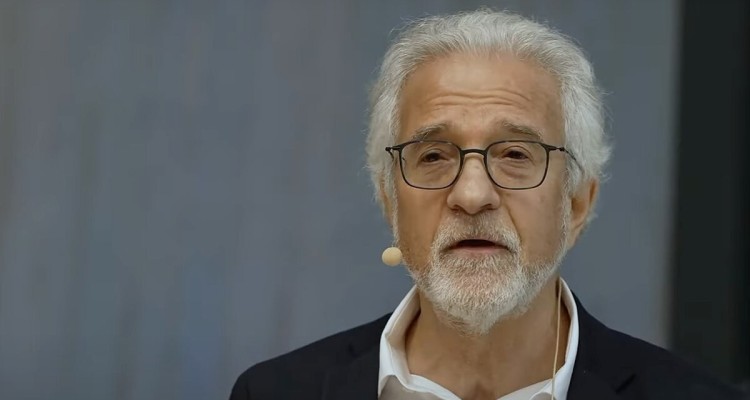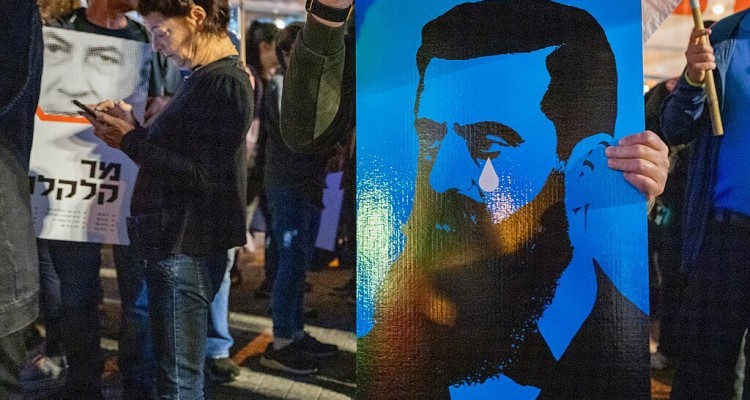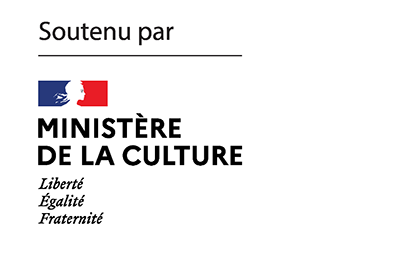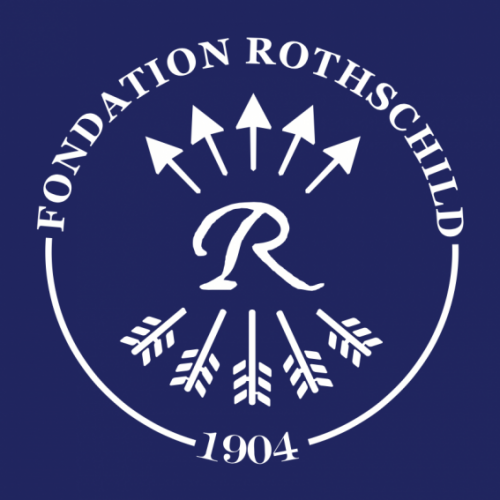What are the origins of the discourse that portrays Israel as an intrinsically genocidal entity, bent on the destruction of the indigenous Palestinian people? In the first part of his historical investigation, Daniel Szeftel examines the revival of Arab nationalism from the 20s to the 40s, highlighting the influence of fascism and European antisemitism on its structuring. The second part of his text will show how, from these ideological coordinates, the discourse of settler colonialism developed in the second half of the 20th century, leading to the absolute demonization of Israel, particularly on American campuses, in international organizations and within the decolonial left.
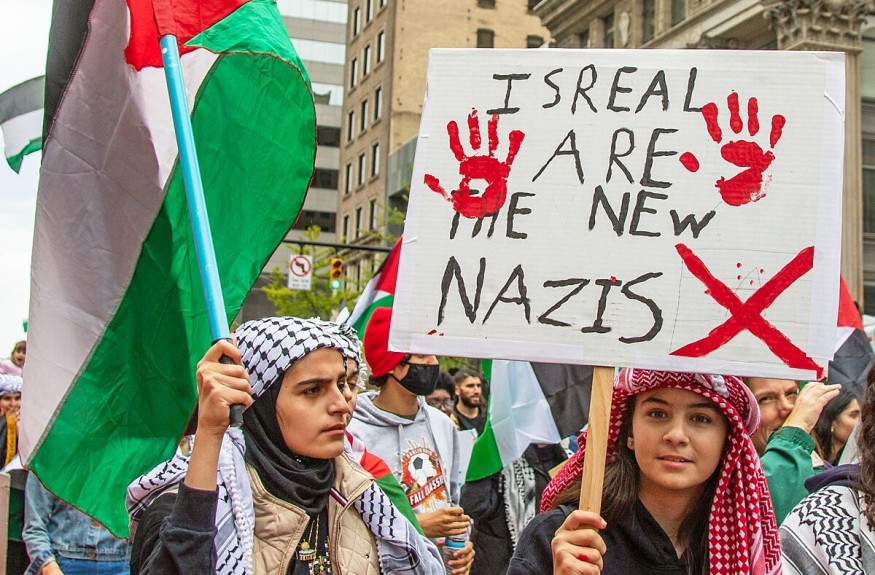
“Let me help France spell out “all challenges” (remise en cause) to a lasting peace between Palestinians and Israelis: ending the genocide in Gaza, the forced displacement of Palestinians and Israel’s Apartheid regime.”. These words were spoken by Francesca Albanese, appointed UN Special Rapporteur on the Palestinian Territories in 2022. Albanese’s statements are part of her broader discourse on the Israeli-Palestinian conflict, which is not so much about attempts to resolve the conflict, or even legitimate denunciations of the situation in the West Bank, as about the staging of a more fundamental confrontation. For Albanese, this vision of Israel as a racist state, guilty of apartheid, ethnic cleansing and even genocide, is not the result of a particular, particularly serious stage in the conflict. It stems from the very existence of Israel in place of an indigenous Palestine: “Israel has been an apartheid state toward the Palestinians “ab initio”. This is NOT a personal opinion – it is fully documented and analysed against int’l law. Truth is that Israel has always been at war with the Palestinians: the latter’s indigeneity is a painful reminder of Israel’s original sin.“
The important word is “indigeneity”, because the prism of analysis used by Albanese to arrive at this type of conclusion is the decisive one of “settler colonialism”: “History shows settler-colonialism is inherently at war with indigenous peoples. The indigenous people’s existence and land connection threaten the colonial power, sparking cycles of repression and resistance. Since violence is intrinsic to settler-colonialism, ending it requires ending settler-colonial practices.” This is a new kind of colonialism, aimed less at exploitation and domination than at the disappearance of the colonized people, and therefore inevitably leads to genocide: “Israel’s genocide of Palestinians in Gaza is an escalatory stage of a long-standing settler colonial process of erasure”.
This eliminationist colonialism does not simply concern Israel, but the West as a whole in its dealings with the colonized: “there is a continuity between Western civilization and Israel: this can also be seen in the language used by the Israelis themselves, who say ‘We are fighting for Western values, to protect you from uncivilized barbarians’. This language echoes that used during the Second World War with regard to the ‘other’ “. In addition to likening Israelis to Nazis (Albanese likens Gaza to “the largest and most shameful concentration camp of the 21st century” and doesn’t hesitate to endorse a comparison between the Israeli Prime Minister and Adolf Hitler), Albanese’s revival of this framework of thought, in which Israel is the armed wing of a genocidal confrontation between the West and the colonized, is redoubled by a conspiratorial antisemitism that sees the hidden hand of Zionists, or even Jews, behind the West’s actions. Thus, in 2024, she declared that “there is a powerful pro-Israeli lobby. Behind it, there are financial interests and interests linked to the desire to retain power. Today, in the Western world, part of the population is protesting against what’s happening in Gaza, but power remains entrenched around Israel”. It was even worse in 2014, when she attacked Jews more directly: “America and Europe, one of them subjugated by the Jewish Lobby, and the other by the sense of guilt about the Holocaust remain on the sidelines”.
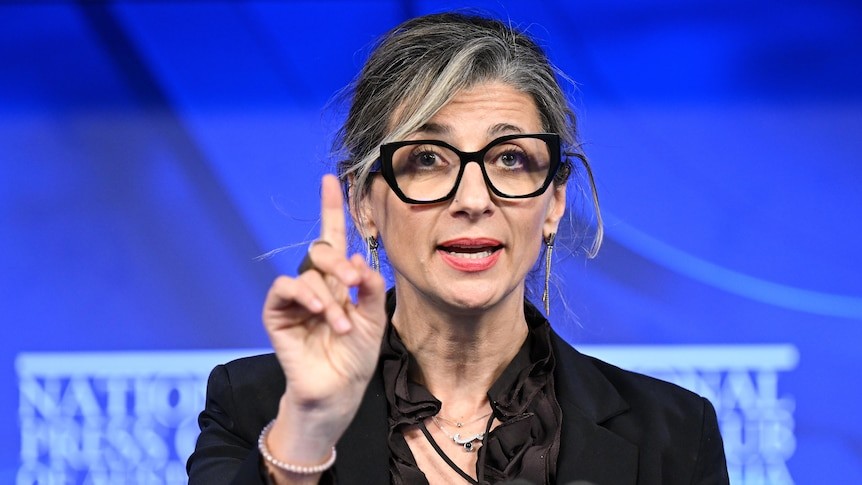
Albanese’s talk of a “lasting peace” between Israelis and Palestinians is no more than a cosmetic concession, since it’s really about ending Israel’s very existence. Similarly, his invocation of “international law” is purely formal, since in this genocidal confrontation between the West and the colonized, there is nothing left in common between the two worlds: Albanese claims to belong to “a movement almost unknown in Italy called Twail (Third World Approaches to International Law) which questions international law”.
Albanese’s highly structured discourse goes beyond the person of the UN Special Rapporteur for the Palestinian Territories, finding itself widely disseminated in the academic sphere, in decolonial and post-colonial activist circles, as well as in international organizations. This is a discourse that disregards international law as one of the sources of Western colonizing power; it also dispenses with the UN’s standard diplomatic framework for conflict resolution, which is effectively irrelevant if Israel’s existence is radically contested; it doesn’t aim to describe the complex historical and social reality that links and separates the two peoples in Palestine, but is content to use two concepts – colonizers and natives – to describe the situation; it doesn’t even bother with the simple logic that one of the incriminations against Israel would suffice without the need to line up racism, apartheid, ethnic cleansing and genocide : So it has all the hallmarks of a militant, ideological discourse. Part of the success of this use of the concept of settler colonialism, however, lies in the fact that it takes on the appearance of an academic or legal discourse, and draws on the various theories that have made it possible to think about colonialism[1].
The history of the accusation of genocide against Israel can help to shed light on the genesis of this ideology. To do this, we need to trace the theoretical revival of Arab nationalism after the fall of the Ottoman Empire, to the formulation of a discourse ideologically structured around the notion of settler colonialism, which circulated easily between the academic world, American minorities, the anti-colonial left, Third World countries and international organizations. In particular, we will trace the trajectories of intellectuals who were somewhat neglected by historiography, but who nevertheless played a fundamental role in the elaboration, circulation and diplomatic and political effectiveness of this discourse – such as Fayez Sayegh, a crucial protagonist of this global history.
The origins: the structuring of Arab nationalism from the reactionary and fascist currents of European nationalism
After the fall of the Ottoman Empire in the Middle East, a new ideological wave took shape within Arab nationalism, inspired in particular by reactionary and fascist European authors, especially Germans. This distrust of democratic thought was partly due to the colonial status of the French and English democracies, which led Arab thinkers to turn to Italy and Germany, particularly when these countries fell victim to Fascism and Nazism. As in Europe, this Arab nationalist wave of the 20s to 40s was also a non-conformist revolt[2] of youth in the face of notables, here deemed too compromised with the colonial powers. Surprisingly, however, it seeks European authoritarian and anti-materialist movements for models[3].
But this interest in European, and particularly German, thought on the part of nascent Arab nationalism seems less surprising when we understand that it had to respond to problems identical to those faced by the Germans. Herder and Fichte thought of German nationalism in a situation where it had no state, but only a common language, history and culture, which was also the case for Arab nationalisms after the fall of the Ottoman Empire[4]…
American Protestant missions spread virulent antisemitism in the educational establishments they created, notably the Syrian Protestant College, which became the American University of Beirut in 1920.
The other factor bringing Arab nationalism and European authoritarian ideologies closer together was antisemitism. In addition to traditional antisemitism in the Muslim world, Christian missionaries had been importing antisemitism since the early 19th century, whether through the network of Orthodox churches led by Tsarist Russia[5], or English and American Protestant missionaries. The American Protestant missions are of particular interest here. Their initial project was to convert the Jews of the Holy Land, but this was soon abandoned in favor of actions aimed at converting the Arab population. These missionaries found in their first failure, and in the massive arrival of Jews in both the United States and Palestine, the reasons for a virulent antisemitism[6]. They were to disseminate it in the educational establishments they created, notably the Syrian Protestant College, which became the American University of Beirut in 1920, destined to become a major site for the formulation and dissemination of the ideology we are attempting to analyze.
This new ideological structuring of Arab nationalism under the influence of European, and particularly German, authoritarian thought, led to the emergence of radical parties in the 1930s, likely to bring this renewal of Arab nationalism to the political arena. The Syrian Social-Nationalist Party, whose existence remained secret until 1936, led the way in 1932. It was followed by the Arab Nationalist Action League and the Arab National Party, both built on the fascist model and precursors of the future Baath Party. What all these groups had in common was that they expressed their identity through plain shirts, the different colors marking, at least for insiders, the different political orientations. The strong presence of these organizations in the public arena has led to the 1930s and 1940s being referred to retrospectively as the “era of shirts” in the Middle East[7].
Although inspired by European fascism, the ideologues of Arab nationalism in the interwar period did not, strictly speaking, adopt the racial theories formulated by Arthur de Gobineau or by National Socialist ideologists. Nevertheless, their definitions of the national community, most often based on supra-historical traits such as the nation’s mythological or religious origins, tended towards a naturalist and essentialist approach to the Nation, closer to the Herderian model than to French civic patriotism[8]. What’s more, when the Arab nationalism of the 20s and 40s, already steeped in Christian and Muslim antisemitism, came to grips with the question of Zionism and the mere presence of Jews in Palestine, it showed a very strong affinity with biological antisemitism and European racial theories, despite the inferior place of Arabs in the hierarchy of “races” in these theories[9].
Two examples: Antoun Saadeh’s pan-Syrianism and Constantin Zureik’s pan-Arabism.
The first example is Antoun Saadeh. A Lebanese Greek Orthodox Christian, he founded the Syrian Social-Nationalist Party in 1932, on his return to Lebanon after living in Latin America. Although largely self-taught, he taught German at the American University of Beirut, where he recruited numerous students to form the militant forces of his party. Georges Antonius, the first historian of Arab nationalism, highlights the key role played by the American University of Beirut in the emergence and then the new essentialist and antisemitic formulation of Arab nationalism: “When account is taken of its contribution to the diffusion of knowledge, of the impetus it gave to literature and science, and of the achievements of its graduates, it may justly be said that its influence on the Arab revival, at any rate in its earlier stage, was greater than that of any other institution”[10].
Antoun Saadeh’s Syrian Social-Nationalist Party campaigned for a “Greater Syria”, its irredentism encompassing Sinai, Palestine, Jordan, Lebanon, Syria, Iraq and even the island of Cyprus. From the outset, this party was characterized by its fascist style: paramilitary organizational structure, cult of the leader, right down to the party flag modelled on the Nazi flag (red and black colors reversed, emblem consisting of a swirl represented as a quasi-swastika), and finally the slogan “Syria above all else” (a mimetic of the slogan “ Deutschland über alles ”).

Beyond these symbolic and organizational characteristics, however, Saadeh seems to be distinguished from Nazi ideology by his rejection of the notion of racial purity: “[T]he nation is a mixture of different human races”[11]. The notion of purity returns, however, via a detour, that of the absolutely distinctive character of the Nation: “[Th]e Nation is a group of people living a life with shared interests, with a shared destiny and shared mental-material constituents in a defined area of land from which it has – over the path of history – attained particular traits and characteristics that distinguishes this group from others”[12]. This distinctive character tended towards purity: Saadeh defended the idea that the Syrian Nation had not suffered any lasting influence from the Arab and then Ottoman conquests[13].
Saadeh’s opposition to Zionism and the Jews is rooted in this exclusivist conception of the Syrian nation, which, when confronted with the Jewish question, reveals its supremacist character[14]:
“This principle cannot be said to imply that the Jew is equal in rights and duties to the Syrian. Such an interpretation is incompatible with this principle, which excludes the integration of elements with alien and exclusive racial loyalties in the Syrian nation. Such elements cannot fit into any homogeneous nation. There are several large settlements of immigrants in Syria, such as the Armenians, Kurds, and Caucasians which are of similar stock as the original Syrian composite, and whose assimilation is possible, given sufficient time. These elements may dissolve in the nation and lose their special loyalties. However, the Jewish settlement is a dangerous and large settlement that cannot be reconciled to the principle of Syrian nationalism in any respect. This settlement consists of a people who, although they have mixed with many other peoples, have remained a heterogeneous mixture, instead of a nation, with strange stagnant beliefs and aims of its own, essentially incompatible with Syrian rights and sovereignty ideals. The duty of the Syrian Nationalists is to repulse the immigration of this people with all its might.“[15].
Saadeh explains that the Syrian nation is undergoing a revival, ridding itself of outdated loyalties and rediscovering its national spirit, but that this revival is not complete due to the “mental and spiritual illnesses” of the past, chief among them “Jewish particularities”.
Moreover, in March 1939, Saadeh devoted an editorial to the rebirth of Syrian unity, in which explicit reference was made to a supposed Syrian-Jewish antagonism. In it, Saadeh explains that the Syrian nation is undergoing a revival, ridding itself of outdated loyalties and rediscovering its national spirit, but that this revival is not complete because of the “mental and spiritual illnesses” of the past, chief among them “Jewish particularities”. Saadeh would also develop the idea of Syria’s “Jews in the house”, who are not actual Jews, but Syrians opposed to his exclusivist ideal of the nation, and with whom a “struggle to the death is engaged”[16]. Here he finds himself very close to H.S. Chamberlain’s concept of the “inner Jew”, i.e. a person who is Jewish not because of ancestry, but because he is penetrated by the “Jewish idea”[17]. These conceptions were completed by the Nazis with their vision of Jews as “anti-race” or “counter-race”, a mere nothingness of being, concentrating in them the negation of all positive ideals. Nazism thus developed the idea of the “inner Jew” into a doctrine of “Jewification” (Verjudung)[18] , which would threaten the German nation from within. Saadeh virtually paraphrases the structure of this idea, which forms the basis of genocidal antisemitism. In 1939, in one of his articles, he portrayed the struggle between Hitler and Stalin as that between “the enemy of the Jews and the creation of the Jews”. He comes to wish for Hitler “the greatest victory known [in the history of] mankind”: to “tear Russia away from Bolshevism and separate it from the democratic countries governed by the Jews” which would make Hitler the “savior of mankind”[19]. At the height of Nazism, Saadeh saw it as a major vector in the struggle between humanity and the Jews, which went far beyond the national struggle.
Constantin Zureik’s first book, On National Awakening[20], published in 1939, another illustration of this fascist conception of Arab nationalism. Born in Damascus in 1909 into a Greek Orthodox family, Zureik too studied at the American University of Beirut before completing his training at the University of Chicago and then Princeton in the USA, where he obtained a doctorate in history in 1930 under historian Philip Hitti. He was then appointed President of the University of Damascus, before becoming Director of the American University of Beirut, and a regular speaker on American campuses (Georgetown, Utah). From the 1950s onwards, he was a diplomat, representing Syria at the United Nations and the United States, and later became director of the Institute for Palestine Studies at the American University of Beirut. In his book National Consciousness – which had a great impact, as he was one of the first to structure an ideology later known as pan-Arabism – he called for the formulation of a “national philosophy” that would overcome the “intellectual anarchy” in Arab society, unify the Arab nation and create a “shared pan-Arab ethnocultural identity”[21].
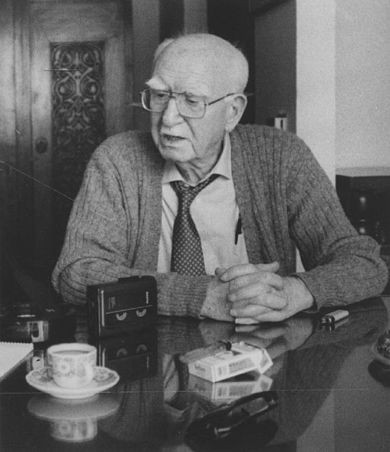
The concept of ethnocultural identity, however, takes on a very specific meaning under his pen. Like most other Arab theorists, he asserts that there is no Arab race in the biological sense, and that we must “tear the veil of ‘race’”, calling for the emergence of an “Arab national religion”, as essentialist and supra-historical as Saadeh’s Syrian nation. It is in this capacity that he considers the Prophet Mohamed above all as a nationalist leader, and Islam as one of the secularized sources of his repeated criticism of materialism (more than fifty occurrences in the book, such as “the snakes of materialism” or “the seeds of materialism”). Zureik also draws on Islam as the source of the vitalism necessary to Arab nationalism, which finds expression in the very frequent revival of the idea of the Great Jihad, at once an “economic, political and cultural reconquest” and a call to everyone’s sense of “sacrifice” and “responsibility”[22]. Antimaterialism, vitalism, worship of the leader: despite regular invocations of rationality or the necessary freedom of expression, Zureik’s Arab nationalism in On National Awakening thus takes the form of a secular religion[23], like the other totalitarianisms of the twentieth century[24].
If, like Saadeh, Zureik rejects the application of racial categories to Arabs, he does speak openly of the “Jewish race” when referring to the conditions for the rebirth of Jewish nationalism. Finally, for him too, the examples of a “national philosophy” capable of structuring the national effort he calls for are to be found in “Maurras” for France, in “Mussolini’s” fascism and in “Fichte, Spengler and Hitler” for Germany. It is thus by drawing on the sources of French integral nationalism, fascism and Nazism that he structures his idea of the nation.[25].
Intellectual and organizational collaboration with Nazism
Zureik’s admiration for the Axis powers was reflected in his anti-French, anti-English and pro-German activities during the Second World War. Zureik became president of the Arab Nationalist Party, a secret pan-Arab structure infiltrating various Arab nationalist organizations such as the National Action League, the youth branch of the National Bloc in Lebanon, the Muslim Scouts, literary clubs at the American University of Beirut, Saadeh’s PSNS and various nationalist clubs in Lebanon, Syria and Iraq. The reopening of the Arab Club in Damascus in early 1937 and its rapid nucleation by the Arab Nationalist Party were the first tangible signs of collaboration with Germany. Its president Saïd Fattah al-Imām, a member of the ANP, held a medical degree from the University of Berlin. Back in Syria in 1935-1936, he established important links with the German Consulate and Nazi Party cells abroad. As early as 1937, he proposed an elaborate collaboration plan to the Nazi authorities: promote German trade in the Arab-Muslim world, create a pro-German atmosphere useful in the event of conflict, spread Nazi thought, fight against Communism, boycott all Jewish products, pursue terrorist acts in all colonial territories and fight against the creation of a Jewish state[26].
During the war, members of the Arab Nationalist Party did not hesitate to publish pro-German articles in the Arab press. What’s more, some ANP members were involved in setting up armed sleeper cells in Syria and Iraq to support the German war effort. Others, who had fled to Palestine to escape the repression organized by France and England, joined forces with the Mufti of Jerusalem in his efforts to collaborate with Nazi Germany. As a result of this repression, Zureik himself stepped down as party chairman in 1939, without showing any particular ideological opposition to his party’s rapprochements with the Nazis[27].
As for the Syrian Social-Nationalist Party, while their leader was once again sent into exile in Latin America in 1938, many party activists were led to collaborate with the Nazi war effort against the French during the Second World War, leading to dozens of arrests within the party ranks. In the absence of the charismatic leader, it was his deputy, Fayez Sayegh, who coordinated the party’s propaganda effort, including the distribution of pro-German leaflets[28]. Sayegh never left Lebanon during the war, but, hunted down by the French authorities for collaborating with Germany, he lived in hiding with PSNS militants until Lebanon’s independence in 1943[29].
Fayez Sayegh was first in charge of the student section of the Syrian Social Nationalist Party at the American University of Beirut, then appointed head of the party’s propaganda during Saadeh’s exile. In this position, he was responsible for widely disseminating the ideas of his leader and the party, as well as leading it de facto until 1946. However, he was expelled from the ranks of the Party upon Saadeh’s return in 1947, not for his activity during the war, but because he tried to introduce existentialist elements into the party’s thinking.

Sayegh, who had become a pan-Arabist, nevertheless remained the leading intellectual representative of PSNS ideology after the war. Like Saadeh and Zureik, he was a Christian, the son of a Presbyterian minister, a denomination established in Lebanon by American missionaries. Like them, he attended the American University of Beirut and then, like Zureik, obtained a doctorate from an American university: he became Doctor of Philosophy at Georgetown University. He went on to teach at the American University of Beirut, as well as in American and English universities (Yale, Stanford, Oxford), before founding a structure that both competed with and complemented Zureik’ s Institute for Palestine Studies: the Palestine Research Center of the Palestine Liberation Organization (PLO), the academic showcase of the Palestinian national movement. Like Zureik, he was also a diplomat. From 1950 to 1955, Sayegh worked for the United Nations, then for the Yemeni delegation to the UN from 1955 to 1959. He was also advisor to the Arab League on international affairs. In 1964, he became a member of the Executive Committee of the Palestine Liberation Organization.
During the war, members of the Arab Nationalist Party did not hesitate to publish pro-German articles in the Arab press. What’s more, some ANP members were involved in setting up dormant armed cells in Syria and Iraq to support the German war effort.
It should be noted that the operational contribution of the Arab Nationalist Party and the Syrian Social-Nationalist Party to the Nazi war effort was part of a wider collaboration between Arab nationalists, Islamists and Nazi Germany, designed to implement a little-known part of the Final Solution in the Middle East: the elimination of the Yishuv, the Jewish Home in Palestine. This operation is described from German archives by historians Klaus-Michael Mallmann and Martin Cüppers[30]. A major propaganda effort was launched by Nazi Germany aimed at Arab nationalists, with a twofold objective: to find allies in the war against the British, and to continue in the Middle East the policy of eliminating Jews pursued in Europe. At the end of the 1930s, the Mufti of Jerusalem, Amine Al Husseini, obtained financial assistance from the Third Reich to help the Arab nationalists in Palestine in their great revolt against the Jews and the British. In 1941, Hitler even supported a coup d’état against the British mandate in Iraq with a few troops. The Prime Minister who came to power, Rashid Ali al-Gaylani, was a fervent supporter of Nazi Germany. His government did not last 6 months, but it ended with a violent pogrom, the Farhoud, prepared by the government in place on the announcement of the arrival of British troops[31]. It was a perfect illustration of the eliminationist antisemitism prevalent in the Arab world at the time.
During the war, several thousand Arab volunteers placed themselves at the disposal of the Germans. As Mallmann and Cüppers establish in Nazi Palestine[32], a commando operation was even organized at the height of the advance of Rommel’s troops into Africa in the summer of 1942 in order to cross the Egyptian-occupied Suez Canal. These SS death squads were to extend the practice of the Shoah by bullets carried out by the SS Einsatzgruppen to Palestine, which was then home to some five hundred thousand Jews. As in the Baltic states, they had to rely on local, in this case Arab, auxiliaries. Fortunately, the defeat of the Italians and Germans at El-Alamein prevented this project from coming to fruition. Husseini and Gaylani took refuge in Germany until the end of the war.
The defeat of the Nazis left the Arab nationalist movement in a paradoxical situation. On the one hand, the Arab world was in the vanguard of the decolonization movement, with the gradual end of the British and French mandates. Between 1922 and 1952, Egypt, Iraq, Lebanon, Syria and Jordan achieved semi-independence and then full independence. On the other hand, dreams of greater Syrian or pan-Arab unity were not immediately realized. Independence initially gave way to nation-states with semi-liberal regimes, incapable of implementing the Arab regeneration and organic nationalism of Saadeh, Sayegh and Zureik. Added to this ideological defeat was another disappointment: the elimination of the Jewish homeland had not taken place, and the march towards the creation of the State of Israel seemed inescapable from 1945 onwards. The long-awaited acquisition of statehood for Arab countries did not, in fact, resolve any of the problems posed by Arab nationalism as it had been structured from the 1920s onwards. If it is to survive, an aggiornamento is therefore necessary: it will take a very specific form, that of the rhetorical reformulation of the discourse, without calling into question the substance of any kind. This reformulation is made up of progressive evidencing (references to European nationalism and overt antisemitism are expelled from the discourse) and accusatory inversions (Zionism, not Arab nationalism, is in itself eliminationist, comparable to Nazism and genocidal). The pathological characteristics of the Arab nationalism of the ’30s thus endure. This new discourse continues to uphold an essentialist conception of the Arab nation, but this is progressively elaborated in a rhetorically more acceptable form: that of the defense of indigenous peoples whose decolonization, at least as far as the Palestinians are concerned, is not yet complete. This reformulation of the discourse thus stages a confrontation between a pure and primordial Palestinian people and Zionism, a form of colonialism to which a racist and genocidal character is attributed. It was under the name of settler-colonialism that this discourse gradually spread, not to the Arab world, but to international public opinion, academia, certain American minorities, Third World countries and international organizations.
Notes
| 1 | It is not the purpose of this article to provide the history of the formation of the concept of settler colonialism in its theoretical aspect, since it is its ideological use that interests us here. To understand why a new concept was needed to account for the colonial and post-colonial situation in geographies as different as New Zealand, Uruguay, Australia, Argentina, South Africa and Chile, but which all share the presence of long-term settler colonization, the reader is referred to Donald Denoon’s seminal article (Denoon, D. (1979). Understanding settler societies. Australian Historical Studies, 18(73), 511-527.) |
| 2 | Sternhell, Z. (1983). Neither Right nor Left: Fascist Ideology in France. |
| 3 | Gentile, E. (2006). Fascisme, totalitarisme et religion politique : Définitions et réflexions critiques sur les critiques d’une interprétation. Raisons politiques, (2), 119-173. |
| 4 | Wild, S. (1985). National Socialism in the Arab near East between 1933 and 1939. Die Welt des Islams, 25(1-4), 126-170. |
| 5 | Hussein Aboubakr Mansour, Vanguards of the Levant The Modern Intellectual Origins of Arab Political Radicalism. |
| 6 | Shattuck, G. H. (2022). Christian Homeland: Episcopalians and the Middle East, 1820-1958. Oxford University Press. pp.10-151. |
| 7 | Marston, E. (1959, May). Fascist Tendencies in Pre-War Arab Politics: A Study of Three Arab Political Movements. In Middle East Forum (Vol. 35, No. 19, pp. 19-22). |
| 8 | Nordbruch, G. (2009). Nazism in Syria and Lebanon: The ambivalence of the German option, 1933–1945. Routledge, p.74. |
| 9 | Nordbruch, G. (2009). Nazism in Syria and Lebanon: The ambivalence of the German option, 1933–1945. Routledge, p.138. |
| 10 | Antonius, G. (2013). The Arab Awakening: The Story of the National Arab Movement. Routledge. p.43. |
| 11 | Saʻādah, A. (2004). The Genesis of Nations. Department of Culture of the Syrian Social Nationalist Party. |
| 12 | Nordbruch, G. (2009). Nazism in Syria and Lebanon: The ambivalence of the German option, 1933-1945. Routledge, pp. 74-75. |
| 13 | Here we find conceptions very close to those developed by Gustave Le Bon, notably his concept of “historical race”, i.e. a mental constitution that is certainly historically acquired, but intangible (Nordbruch, G. (2009). Nazism in Syria and Lebanon: The ambivalence of the German option, 1933-1945. Routledge, pp. 73-74). |
| 14 | Payne, S. G. (1996). A history of fascism, 1914-1945. University of Wisconsin Pres. p.353. |
| 15 | Mujais, Salim and Badr el-Hage. al-Duktūr Khalīl Saʿādah: Mabā ḥ ith ʿUmrāniyya wa Falsafiyya, al-Mujallad al-Rābiʿ [Dr. Khalil Saʿadeh: Civilizational and Philosophical Discussions]. Beirut: Kutub, 2016. pp. 23-26 Translated by Fakhri Maluf. |
| 16 | Hussein Aboubakr Mansour, The Origins of the ‘Zionism is Settler Colonialism’ Paradigm: Antoun Sa’adeh, the SSNP, and Fayez Sayegh. |
| 17 | Voegelin, Éric. “La formation de l’idée de race”, Cités, vol. 36, no. 4, 2008, pp. 135-171. |
| 18 | Voegelin, Éric. “La formation de l’idée de race”, Cités, vol. 36, no. 4, 2008, pp. 135-171. |
| 19 | Nordbruch, G. (2009). Nazism in Syria and Lebanon: The ambivalence of the German option, 1933-1945. Routledge, p. 76. |
| 20 | C. Zureik, ‘Al-wa>ī al-qawmī’, al-Hadīth, no. 8, 1939. OCR by Scanflow and machine translation by DeepL |
| 21 | Nordbruch, G. (2009). Nazism in Syria and Lebanon: The ambivalence of the German option, 1933-1945. Routledge, p.77. |
| 22 | C. Zureik, ‘Al-wa>ī al-qawmī’, al-Hadīth, no. 8, 1939. OCR by Scanflow and machine translation by DeepL. |
| 23 | Gauchet, M. (2011). Secular Religions: Origin, Nature, and Fate. Le Débat, 167(5), 187-192. |
| 24 | Gentile, E. (2006). Fascisme, totalitarisme et religion politique : Définitions et réflexions critiques sur les critiques d’une interprétation”, Raisons politiques, (2), 119-173. |
| 25 | Saadeh’s pan-Syrianism and pan-Arabism obviously differ in terms of their immediate political goal: the formation of a Greater Syria for one, the unification of all Arab countries for the other. This difference is less pronounced than what brings the two nationalist ideologies together: an essentialist conception of the nation, a profound anti-materialism, a pronounced vitalism and an eliminationist antisemitism. The frequent passage of intellectuals or activists from pan-Syrianism to pan-Arabism and the terminal fusion of the two ideologies in Syrian Baathism attest to this deep resemblance. |
| 26 | Nordbruch, G. (2009). Nazism in Syria and Lebanon: The ambivalence of the German option, 1933-1945. Routledge, p.83. |
| 27 | Idem, p.86. |
| 28 | Idem, p.111. |
| 29 | Beshara, A. (2019). Fayez Sayegh – the party years 1938-1947. Black House Publishing, pp.40-45. |
| 30 | Melka, R. (2013). Nazi Germany and the Palestine question. In Palestine and Israel in the 19th and 20th Centuries (pp. 89-101). Routledge. Mallmann, K. M., & Cüppers, M. (2007). Elimination of the Jewish National Home in Palestine: The Einsatzkommando of the PanzerArmy Africa, 1942. Yad Vashem Studies, 35(1), 111-41. Mallmann, K. M., & Cüppers, M. (2013). Nazi Palestine: the plans for the extermination of the Jews in Palestine (Vol. 8). Enigma Books. |
| 31 | Perpetrated on June 1 and 2, 1941, this pogrom left between 150 and 180 Iraqi Jews dead and around 600 wounded. |
| 32 | Mallmann, K. M., & Cüppers, M. (2013). Nazi Palestine: the plans for the extermination of the Jews in Palestine (Vol. 8). Enigma Books. |

